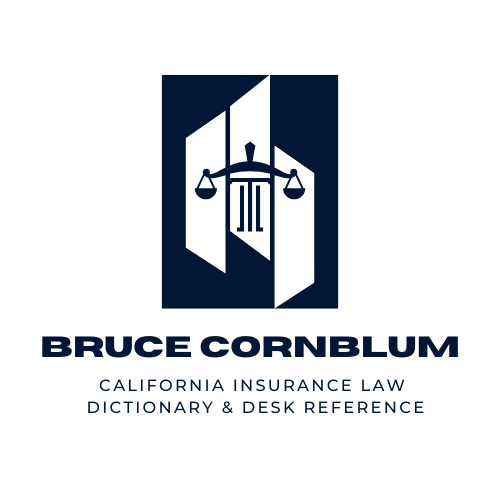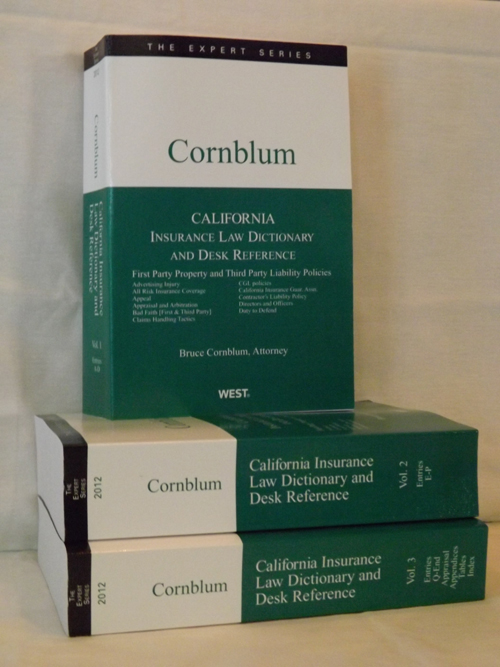CHIEF JUSTICE RONALD GEORGE RETIRES
Chief Justice Ronald George was appointed by Governor Pete Wilson to succeed Chief Justice Malcolm Lucas in mid-1996.
From an outsider’s perspective, which is the perspective of the author, based upon a review of professional articles written, Chief Justice George’s legacy will be linked to the management of the court system. He led the 27 member Judicial Counsel which supervised the largest court system in the country, overseeing the administration of the courts, promulgating policy and procedure. [41 McGeorge Law Review, page 581, fn. 15] Chief Justice George oversaw the transfer of ownership of court facilities from the counties to the State. Funding for the courts during his tenure was transferred from the counties to the State. The exchange transformed the judicial branch from a lose confederation of locally orientated courts into an organized, state-wide presence that speaks for the state court system as a whole, a system being dedicated to improving fair and accessible administration of justice for all Californians. [97 Cal. Law Review, page 1853, 1854-1855 (2009)]
At a time before Chief Justice George’s appointment, Associate Justice Stanley Mosk wrote in a dissenting opinion in 1989: “In this court, the insurer wins and the insured loses.” [Garvey v. State Farm (1989) 48 Cal.3d 395, 416, 417] Over time, the George Court changed this perspective. The change was assisted by Justice Janice Brown leaving the court in 2005 as well as the appointments of Justice Moreno and Justice Corrigan, coupled with the presence of Justice Kennard.
Justice Lucas, appointed in 1986 after Chief Justice Bird was ousted by the electorate, changed direction of the Supreme Court in insurance related matters from liberal activism to conservative jurisprudence. [40 Santa Clara Law Review, page 863, 882 (2000)] Justice George, who succeeded Justice Lucas, was seen as somewhat less conservative than Lucas. [40 Santa Clara Law Review, footnote 56]
As chronicled in this INTRODUCTION, the early years of the George court brought “more of the same”, appearing to continue on with a philosophical bent that was described by Justice Mosk in his dissent in Moradi-Shalal v. Fireman’s Fund Ins. (1988) 46 Cal.3d 287, 313-314, quoted in this INTRODUCTION at page xvii, supra. Aas v. Superior Court (2000) 24 Cal.4th 627 was so egregious that it led the Legislature to act to overrule its holding. See § C85 CONSTRUCTION DEFECTS [§ C85:9.2]. PPG Industries v. Transamerican Ins. (1999) 20 Cal.4th 310 excluded punitive damages from an excess verdict notwithstanding the fact that the insurer had an opportunity to settle prior to trial and wrongly failed to do so. Palmer v. Truck Ins. (1999) 21 Cal.4th 1109, authored by Justice Janice Brown, construed ‘advertising injury’ under a 1973 industry form policy against the insured. Kazi v. State Farm (2001) 24 Cal.4th 871 held that economic loss caused by a loss of rights in easement is not property damage under a CGL policy. Henkel Corp. v. Hartford Ins. (2003) 29 Cal.4th 934 (successor corporation limited right to defense and indemnity under a predecessor’s liability policy). Rosen v. State Farm (2003) 30 Cal.4th 1070 strictly interpreted collapse coverage adversely to the insured; opinion by Justice Janice Brown. Hameid v. National Fire Ins. of Hartford (2003) 31 Cal.4th 16 interpreted “advertising injury” against the insured. Julian v. Hartford Underwriters (2005) 35 Cal.4th 747 modified the efficient proximate cause rule against the insured. Boghos v. Certain Underwriters (2005) 36 Cal.4th 495 enforced an arbitration provision contained in a disability policy against an insured; discussed in this INTRODUCTION at page xxv. Powerine Oil v Superior Court (2005) 37 Cal.4th 377 limited the duty of the insurer to defend an insured in administrative claims
The above is not meant to state that the insured was not being heard prior to 2004-2006. See Vandenberg v. Superior Court (1999) 21 Cal.4th 815, overruled seven Court of Appeal opinions which applied the ex contractu / ex delicto distinctions in determining whether coverage would be available where an insured acted in breach of contract; Kransco v. American Empire (2000) 23 Cal.4th 390, 394 (comparative fault held not to be a defense to insurer bad faith).
Commencing 2004 a most important doctrine, under attack in the Court of Appeal, was preserved and expanded. The doctrine related to the acts of ‘bad faith’ performed by the insurer in not paying benefits when due. Assisted by the change in Court personnel, as described, the George Court has ruled favorably and consistently for the insured where the insurer has performed “wrongful” conduct in adjusting claims. In Cassim v. Allstate (2004) 33 Cal.4th 780, first party bad faith, adjusting a fire loss under a homeowners policy was affirmed. Importantly, “Brandt” fees were preserved. In Essex Ins. v. Five Star Dye (2006) 38 Cal.4th 1252, an assignee of an insured was held entitled to claim Brandt fees. Pilimai v. Farmers Ins. (2006) 39 Cal.4th 133 held that an offer made pursuant to CCP § 998 applied to UM arbitrations. Wilson v. 21st Century Ins. (2007) 42 Cal.4th 713 described in great detail the performance of bad faith adjusting in auto claims. In State of California v. Allstate Ins. (2009) 45 Cal.4th 1008, the Supreme Court preserved and expanded the holding in State Farm v. Pritchard from first party property insurance to third party liability policies; see § C62.02 CONCURRENT CAUSE. Recently in Minkler v. Safeco Ins. (2010) 49 Cal.4th 315, the Court applied a severability clause contained in homeowners and CGL policies to protect coverage for innocent or negligent co-insureds who are sued due to the intentional sexual acts of a co-insured. See § S28 SEVERABILITY CLAUSE. Ameron International Corp. v. Insurance Co. of Pennsylvania (2011) 50 Cal.4th 1370, holding that a proceeding commenced and heard before a ‘quasi-judicial proceeding’ before the United States Interior Civilian Board of Contracts was a “suit” and a “court proceeding”. Ameron International distinguished Foster-Gardner Inc. v. National Union Fire Ins. Co. (1998) 18 Cal.4th 857 and Certain Underwriters v. Lloyds (2001) 24 Cal.4th 945, 960. See § S116 SUIT. In her concurring opinion in Ameron International, Justice Kennard stated her belief that the holding in Ameron overruled Foster-Gardner and Certain Underwriters.
Perhaps the most important decisions of the George Court assuring fairness for the insured into the future are those opinions relating to policy interpretation. Justice Moreno played an important role in these decisions. In MacKinnon v. Truck Ins. (2003) 31 Cal.4th 635 the Supreme Court sub silento eliminated the previously mandated three-step AIU process for insurance policy interpretation. See § A66 AMBIGUITY [§ A66:4.1 After AIU v. Superior Court]. Confirming the MacKinnon interpretation approach was the opinion of EMMI v. Zurich American (2004) 32 Cal.4th 465. See § A66 AMBIGUITY [§ A66:4.1.1]. The sum and substance of the above allows the insured to allege and prove by extrinsic facts the principle: “An insurer’s reasonable interpretation of a policy exclusion will not cause it to prevail in the absence of establishing that its (insurer) interpretation is the only reasonable one”. [MacKinnon v. Truck Ins. (2003) 31 Cal.4th 635]
The George Court, over time, embedded in insurance law even handedness, fair mindedness, replacing political philosophy as a factor in interpreting liability and property policies.
Chief Justice George, thank you for serving.
Bold references are to sections in Volumes 1 and 2 of CALIFORNIA INSURANCE LAW DICTIONARY AND DESK REFERENCE, 2010. The above article is from the INTRODUCTION to CALIFORNIA INSURANCE LAW DICTIONARY AND DESK REFERENCE, 2011 Edition, to be published in June 2011.

